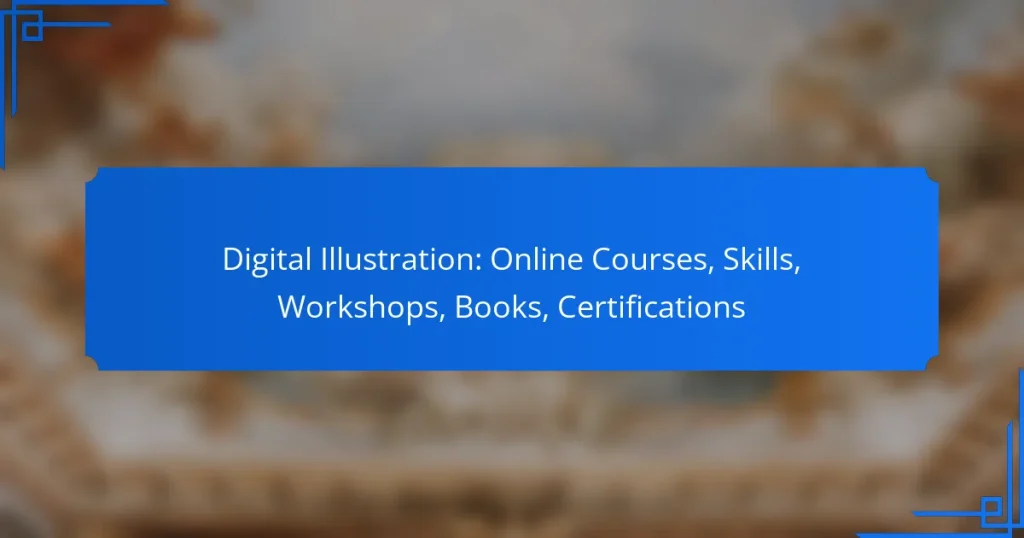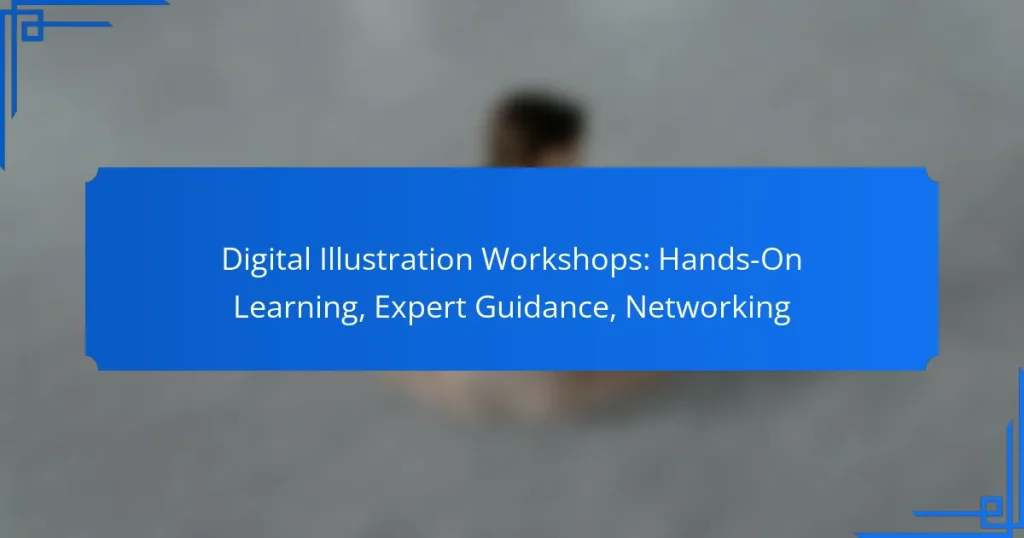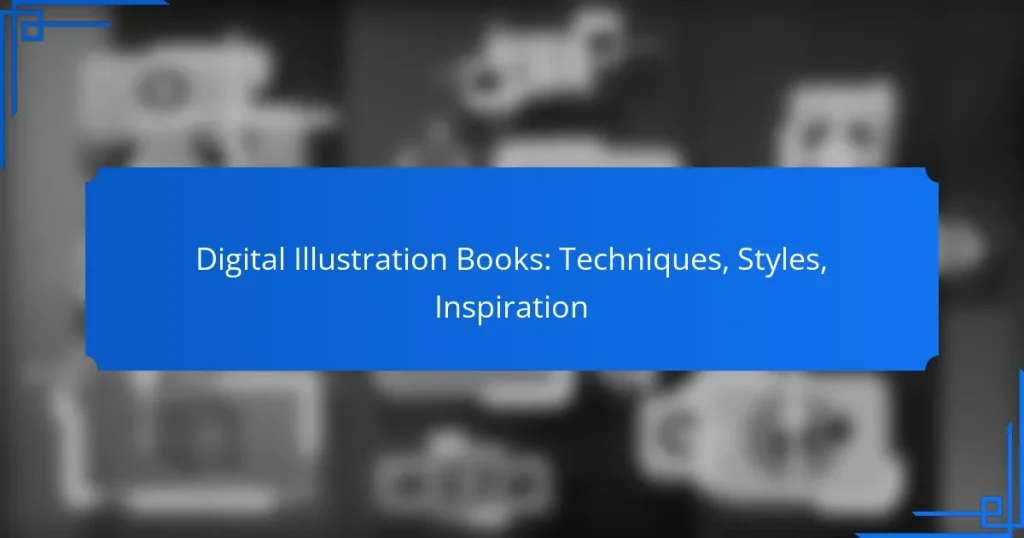Digital illustration education equips aspiring artists with essential skills that blend traditional artistry with cutting-edge technology. Programs offered by reputable institutions focus on building a strong artistic foundation while preparing students for the demands of the industry. When selecting a program, it’s important to consider factors such as accreditation, curriculum, and overall support to ensure a fulfilling educational experience.
Digital Illustration Workshops: Hands-On Learning, Expert Guidance, Networking
Digital Illustration Books: Techniques, Styles, Inspiration
What Are the Best Digital Illustration Courses in the US?
The best digital illustration courses in the US combine strong artistic foundations with modern technology skills. Institutions like the School of Visual Arts and California College of the Arts offer comprehensive programs that prepare students for a competitive industry.
School of Visual Arts
The School of Visual Arts (SVA) in New York City is renowned for its Bachelor of Fine Arts in Cartooning and Illustration. This program emphasizes both traditional and digital techniques, allowing students to develop a versatile skill set.
SVA also offers workshops and seminars with industry professionals, providing valuable networking opportunities. Students can expect to engage in hands-on projects that build their portfolios, which are crucial for job placements after graduation.
California College of the Arts
California College of the Arts (CCA) offers a Bachelor of Fine Arts in Comics and a Master of Fine Arts in Comics Studies. Located in the San Francisco Bay Area, CCA focuses on narrative art and visual storytelling, integrating digital tools into the curriculum.
Students benefit from small class sizes and personalized feedback from faculty, many of whom are active in the industry. CCA also encourages collaboration across disciplines, enhancing the creative process and broadening skill sets.
Rhode Island School of Design
The Rhode Island School of Design (RISD) is known for its rigorous Bachelor of Fine Arts in Illustration program. RISD emphasizes conceptual thinking and technical proficiency, preparing students for various careers in illustration.
With access to state-of-the-art facilities and resources, students can explore various mediums, including digital illustration. RISD’s strong alumni network also aids in job placements and internships in the creative field.
Savannah College of Art and Design
Savannah College of Art and Design (SCAD) offers a comprehensive Bachelor of Fine Arts and Master of Fine Arts in Illustration. The program is designed to foster creativity while teaching the latest digital tools and techniques.
SCAD provides students with access to cutting-edge technology and industry-standard software. The college also hosts annual events like the SCAD AnimationFest, which connects students with industry leaders and showcases their work.
Online Platforms
Online platforms such as Skillshare, Coursera, and Udemy offer a variety of digital illustration courses that cater to different skill levels. These platforms allow learners to study at their own pace and often provide access to industry professionals through video tutorials and feedback sessions.
When choosing an online course, consider factors like course length, instructor qualifications, and student reviews. Many platforms also offer free trials or introductory courses, making it easier to find the right fit before committing financially.
How to Choose a Digital Illustration Program?
Choosing a digital illustration program involves evaluating factors such as accreditation, curriculum, instructor experience, and student support services. These elements will help ensure that you receive a quality education that meets your career goals.
Accreditation and Reputation
Accreditation is crucial as it reflects the quality and recognition of the program. Look for programs accredited by reputable organizations, which often indicates adherence to educational standards.
Research the program’s reputation through reviews, alumni success stories, and industry connections. A well-regarded program can enhance your resume and provide valuable networking opportunities.
Curriculum and Specializations
Examine the curriculum to ensure it covers essential skills in digital illustration, such as software proficiency, design principles, and creative techniques. A robust program should offer a mix of theoretical knowledge and practical application.
Consider specializations that align with your interests, such as character design, concept art, or animation. Programs that provide elective courses allow you to tailor your education to your career aspirations.
Instructor Experience
Instructor experience can significantly impact your learning. Look for programs with faculty who have real-world experience in the digital illustration field, as they can provide insights and mentorship.
Check for instructors who have a strong portfolio and industry connections. Their expertise can enhance your education and potentially lead to job opportunities after graduation.
Student Support Services
Effective student support services are vital for a successful educational experience. Look for programs that offer academic advising, career counseling, and portfolio reviews to help you navigate your studies and future career.
Additionally, consider the availability of resources such as workshops, networking events, and internship opportunities. These services can provide practical experience and help you build a professional network in the digital illustration industry.
What Are the Costs of Digital Illustration Education?
The costs of digital illustration education can vary significantly based on the institution, program length, and location. Students should consider not only tuition fees but also additional expenses like materials and software when budgeting for their education.
Tuition Fees
Tuition fees for digital illustration programs typically range from a few thousand to over twenty thousand USD per year, depending on the school and its reputation. Public colleges may offer lower rates for in-state students, while private institutions often charge higher fees.
Online programs can provide more affordable options, with some courses costing as little as a few hundred dollars per credit hour. Always check if the program is accredited, as this can impact financial aid eligibility and job prospects after graduation.
Additional Expenses
In addition to tuition, students should budget for software licenses, which can range from a few hundred to over a thousand dollars annually. Popular tools like Adobe Creative Cloud often require subscriptions, adding to the overall cost.
Other expenses may include hardware like a graphics tablet or a powerful computer, art supplies, and printing costs for portfolios. It’s wise to set aside funds for these items to avoid unexpected financial strain during your studies.
Financial Aid Options
Many institutions offer financial aid options, including scholarships, grants, and student loans. Scholarships specifically for art and design students can significantly reduce tuition costs, so it’s beneficial to research and apply for these opportunities early.
Additionally, federal and state financial aid programs may provide assistance based on need or merit. Students should complete the Free Application for Federal Student Aid (FAFSA) to determine their eligibility for various funding sources.
What Skills Do You Learn in Digital Illustration?
In digital illustration, you gain a blend of technical and creative skills essential for producing compelling artwork. Key areas of focus include software proficiency, artistic techniques, and portfolio development, which together equip you to thrive in various artistic environments.
Software Proficiency
Mastering digital illustration software is crucial for creating high-quality artwork. Popular programs include Adobe Illustrator, CorelDRAW, and Procreate, each offering unique tools and features suited for different styles and projects.
Familiarity with these applications allows you to manipulate images, utilize layers, and apply effects effectively. It’s beneficial to explore tutorials and online courses to enhance your skills and stay updated with software updates.
Artistic Techniques
Developing artistic techniques is fundamental in digital illustration. This includes understanding color theory, composition, and perspective, which are vital for creating visually appealing images.
Practicing different styles, such as vector art or digital painting, can help you discover your unique voice. Regularly experimenting with techniques like shading, blending, and line work will refine your artistic abilities.
Portfolio Development
A strong portfolio showcases your skills and artistic style, making it essential for career advancement. Aim to include a diverse range of work that highlights your versatility and expertise in various techniques and subjects.
Consider organizing your portfolio by themes or styles, and keep it updated with recent projects. Sharing your work on platforms like Behance or ArtStation can also help you gain visibility and attract potential clients or employers.
What Are the Career Opportunities in Digital Illustration?
Digital illustration offers diverse career paths, each with unique demands and rewards. Opportunities range from freelance work to positions in established companies, allowing artists to choose their preferred work style and environment.
Freelance Illustrator
Freelance illustrators operate independently, creating custom artwork for clients across various industries. This role allows for flexibility in projects and schedules, but it requires strong self-marketing skills and the ability to manage business aspects like contracts and invoicing. Building a portfolio and networking are crucial for attracting clients.
Graphic Designer
Graphic designers often incorporate digital illustration into broader design projects, such as branding, advertising, and web design. This position typically involves collaborating with clients to develop visual concepts that communicate messages effectively. Familiarity with design software and an understanding of typography and layout are essential skills in this field.
Concept Artist
Concept artists focus on visualizing ideas for films, video games, and other media. They create illustrations that represent characters, environments, and props, serving as a blueprint for production teams. Strong drawing skills and the ability to adapt styles to fit different projects are vital, along with a solid understanding of storytelling and visual composition.
What Are the Prerequisites for Digital Illustration Programs?
Digital illustration programs typically require a foundational understanding of art and design principles, along with proficiency in digital tools. Most programs also expect applicants to have a portfolio showcasing their artistic skills and creativity.
Educational Background
A high school diploma or equivalent is generally the minimum requirement for entry into digital illustration programs. Some institutions may prefer candidates with a background in fine arts, graphic design, or related fields. Courses in drawing, color theory, and composition can be beneficial.
Technical Skills
Proficiency in software such as Adobe Illustrator, Photoshop, or CorelDRAW is often essential for success in digital illustration. Familiarity with graphic tablets and other digital tools can enhance your ability to create detailed artwork. Many programs may offer introductory courses to help students build these technical skills.
Portfolio Requirements
Most digital illustration programs require a portfolio that demonstrates your artistic abilities and style. This portfolio should include a variety of works, showcasing different techniques and subjects. Aim for quality over quantity, with around 10-15 strong pieces that reflect your best work.
Personal Attributes
Successful digital illustrators often possess creativity, attention to detail, and strong communication skills. Being open to feedback and willing to collaborate with others can also enhance your learning experience. Time management and self-discipline are crucial, especially when working on projects with deadlines.


